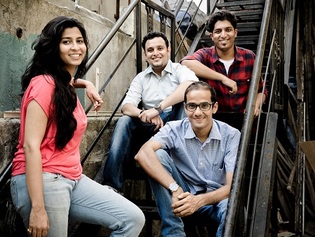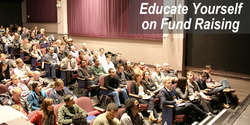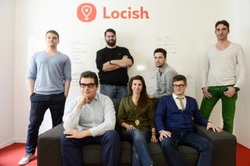|
Every startup will have a passionate entrepreneur behind it who fell in love with an idea enough to give it his all. But to succeed, that is not enough. Others have to fall in love with your idea too. Others include investors. Here are the top traits that emerged out of the discussions. These are 3 key questions investors will seek answers from entrepreneurs before deciding on funding the startup.
1) Do you have the guts and drive to cross the dark valley? “When an entrepreneur succeeds, there is so much glamour and halo attached to them. What is forgotten or undervalued is the walk through the dark valley entrepreneurs go through,” Vani Kola, Managing Director, Kalaari Capital, told us. Before she became a VC, Vani Kola had built two successful companies in Silicon Valley and exited them with billion-dollar valuation. “There are times when you can’t access capital, nobody believes in your idea, and even when you are winning or think you are winning, nobody really gives any value to the growth you are creating. Sometimes you don’t know how in the next six months you can take your business to the next level. There are so many lonely, dark spots in the growing of your business. As I have experienced those personally, I look at an entrepreneur and see, do they have the guts and drive inside them to cross that black hole? Will they get consumed by that? Will they quit or will they persevere?” This is one quality she looks for in an entrepreneur. “That elusive quality of perseverance — People who can compartmentalise these inevitable problems, which are costs every entrepreneur has to bear, and have immense faith on their product or service, and have a deep passion to pursue it — is something that I, having been an entrepreneur myself, empathise with. On the days things don’t go great, this quality will see the entrepreneur through,” she says. 2) Can you transmit your passion and faith to the investor? At the stage of seed and series A round of funding, an entrepreneur doesn’t have the numbers to back him, and therefore investors have a tough decision before them. “You don’t know whether the business will take off or taper off; you don’t know whether the entrepreneur who delivered the business from ten thousand to five millions can actually build a business that looks like it can go to 50 millions. You don’t know whether the team is fully in place to do that. You don’t know whether the market sizing is yet niche or is it going to grow to a 20 million or is it going to cross that 100 million mark which everybody is looking for. And therefore an investor is far more hesitant,” explains Karthik Reddy, co-founder and managing partner of Blume Ventures. “The investors who eventually end up cutting the cheque are those who become equally passionate about solving all those questions. They see that spark in the entrepreneur. They see that market opportunity, just as the entrepreneur sees it. At seed, it is probably an extreme version of that shared passion and faith.” 3) How good is your team or can you build a great team? However good your product is, however good a coder or business head you are, without a complimentary team member or without the ability to build a great organisation you are not going to survive and make it to series A, Karthik Reddy says. “The learning from three years of seed investing is that the team is more important in our evaluation matrix as we mature as a fund. Without a good team, even if you somehow make it to series A, you are probably going to falter before you get to series B, leave alone grand hundred million exit stories.” According to him, investors should walk away from the opportunity, however best the idea might be or however much they relate to the idea if the team isn’t strong enough or the entrepreneur looks unlikely to be a good team leader. “After all, an investor is not going to run the startup for the entrepreneur. So fundamentally, if they are not going to make their business work themselves, you shouldn’t invest in it.” _____________________________________________________________________________________ This is an edited version of a post originally posted at yourstory.com, by Malavika Velayanikal is Executive Editor of YourStory.com and Innovation Junkie. You are free to re-edit and repost this in your own blog or other use under Creative Commons Attribution 3.0 License terms, by giving credit with a link to www.startupcommons.org and the original post.  It has been three years building Hammer and Mop, and it seems like one long arduous trek- eventful and full of valuable lessons. There have been times when my limbs threatened to give up, but a look at the distant peak usually set things right again. Last year, it felt good completing two years out in the cold. We have now reached the base camp. There are some things I’ve learnt and thought it worthwhile to share: It’s all about people I cannot stress this enough. Right from the day I decided to start off on this trek, till the day I pitched my tent at the base of this peak I have been helped, advised, counselled by people with whom I share a genuine relationship that is mutually beneficial. Customers are people who you need to communicate with. Allies are people who need to get value out of an association. Team members are people who need to feel respected and a part of the game. Your family — with their unconditional love — only fear for your sanity. You are a human and you need to love yourself. It’s all about information Today, we are a team of individuals following certain processes and believing in certain ideas day after day. At all levels, our focus is hiring leaders who can grow with the company by lending their shoulders to the task. Distilling the broad vision to profile specific short term goals has helped us perk up performance and boost accountability. A team supervisor focuses only on cleanup quality, communications focuses only on information flow, and so on. Our mentors and well wishers help us keep a holistic perspective. While the team is a submarine working hard at being submerged, our mentors provide the periscope. It’s all about your team We are crazy about the peak and take lead to manage aspects while figuring out the way through the jungle. I didn’t know what to expect out of ‘employees’ three years back and my errors cost me my entire team once. Proper policies, complementary skills, mutual respect, clear communication and a healthy work environment play a big role. Most of my team consists of blue collar workers. The vicious circle of managing them is a misconception, because respect has to be earned. I have learned that everyone likes the peak, and is keen to play a well defined role in a performing team. Things fall apart if clarity is lost. In a jungle, we have realized that we need to have each other’s back and that has helped us keep going. It’s all about your customers And they are loveable humans too. Their expectations are pretty simple, and they pay, so keeping them happy is key to a successful business. They understand goof ups, empathise and offer support. Customers seek an honest relationship and are generous with compliments if things go well. They are generous with critical feedback if things don’t. I have been fortunate to have numerous patrons who have held our hands throughout, helping us get better at what we do. Negotiations have seldom been about money, they almost always transcend to intangibles if the game is played right. Customers seek trust, which is built by consistent service. Being open and apologetic about our weaknesses has helped us live. It’s all about money Not at the cost of ethics and quality. You might be in the business to contribute to the society, but you dig your own grave by not being focused on cash flow and profits. Money is the essential grease, profits can be reinvested for growth, healthy cash flow provides you with bandwidth to make your customers happier. An organisation needs to sustain itself and its people, and that’s why it needs to earn money. To ensure the same, for a young company like ours, that’s the CEO’s job. It’s not about the comfort zone At the start, I remember my co-founder urging me to be on the field and find recruits. “Go out and smell the fresh grass, ongoing analysis sitting in the comfort zone isn’t going to make things happen,” he had said. Finding our own spot is a trap, because the proactive explorers win. While it is essential for startup CEOs to know every aspect of the business they run by rolling up the sleeves, it is crucial they ask their senior team members to do the same too. A company won’t grow with leaders sticking to their offices. A company won’t grow without pushing all boundaries. ____________________________________________________________________________________ This is an edited version of a post originally posted at yourstory.com, by Sushrut Munje (Co-Founder of Hammer and MopYou are free to re-edit and repost this in your own blog or other use under Creative Commons Attribution 3.0 License terms, by giving credit with a link to www.startupcommons.org and the original post. Sushrut Munje. Make no mistake about it. Silicon Valley is expensive. Actually, it’s very expensive. But if you’ve ever spent any time in the Valley then you already knew that. For those on the outside, then you can believe that rumors surrounding Silicon Valley’s pricey cost of living are true.
Should you move your business to Silicon Valley? Before you make that decision, here are a few things you should keep in mind? But, just how expensive is Silicon Valley really? Compared to the rest of the country, the cost of living is 87% higher in the Valley than any other American city. When it comes to housing, Silicon Valley is also the most expensive in the U.S. In fact, based on a survey conducted by Coldwell Bankers in its “Luxury Market Report 2014,” Woodside, CA is the nation’s top luxury market. Woodside wasn’t the only town located in Silicon Valley to crack the top five. Portola Valley was third, with Hillsborough coming in at number four. So, if you wanted to relocate to Woodside, expect to spend $949,000 on a two bedroom house with one bathroom and a fireplace – this for the record was the cheapest listed house in Woodside. Trulia, however, found that the average listing price for homes in Atherton at $9,347,107, which could make it the most expensive city in the country. But what’s a couple million dollars when you’re living in the same area as the guys who founded Google, Larry Ellison, Mark Zuckerberg, George Lucas and Paul Allen? In case you were wondering, there are 71 billionaires who call the Bay Area home, so of course it’s going to be expensive. So what if you’re not a billionaire? Let’s say you’re just you’re a teacher or even an engineer, what’s the price range? The median price for a home is $550,000 in the whole bay area. If you’re looking at San Francisco, it’s around $1.1 Million. And rent? You’re looking at around $3,000 a month for a two-bedroom apartment, which is 76% more than the national average. I personally pay $2,700 a month for my one bedroom in Palo Alto. I had to consider this before I moved my startup to Silicon Valley. To put it another way, if you have a family of four, you would need $90,000 a year to cover rent, food, transportation and childcare. To be more upfront, Silicon Valley is the 7th least affordable housing market for middle class families, San Francisco captured the top spot. Of course, the housing situation isn’t the only major cost in the Silicon Valley. Living in California also means that if you make over $46,776 a year, the state is going to hit you with a 9.3% income tax. Speaking of taxes, whenever you go out and do some shopping, just remember that California has the second highest state and local sales tax rates at 9.08%. Even Hawaii has more favorable sales tax rate at 4.35%. If you look at the ten most expensive cities in regard to sales tax, Fremont and San Francisco are included. As for basic necessities. Silicon Valley is 62% higher than the national average. And gas prices? Both San Jose and San Francisco are included in the ten most expensive cities for gas at over $4 per gallon. Is any of this that big of a concern when you reside in one of the highest paying areas in the country? (Web developers earn $25,000 more than the national average and customer service representatives and lawyers also do well here). Well, it should. Despite Silicon Valley having a reputation for having a higher median income (it was $60,000 in 1993 compared to the $30,000 elsewhere in the country) it’s still a concern if weighing your options on whether or not to live in Silicon Valley. For example, if you made $92,300 a year in the Valley, you would need $74,800 to live that same exact lifestyle in New York City. That’s not saying that you should relocate or never move to the Valley. It’s just bringing up a comparison to give you a better understanding of how pricey, it is to live in Silicon Valley. If you already reside in the Valley, then you already know how expensive it is for housing, gas, food, etc. And hopefully you’ve been fortunate enough to make enough in your salary that you can enjoy the weather and everything else that Silicon Valley has to offer. However, if you’re looking to move to this area because you think it’s magical and can help make your startup a success, you may want to consider other options if money is tight. While it’s an incredible place to work and play, the Valley is really, really expensive. _____________________________________________________________________________________ This is an edited version of a post originally posted at yourstory.com, by John Rampton (President at Adogy), an entrepreneur, full-time computer nerd and startup expert. You are free to re-edit and repost this in your own blog or other use under Creative Commons Attribution 3.0 License terms, by giving credit with a link to www.startupcommons.org and the original post. It is very typical to measure mature of startups ecosystems in terms of new startups, growing startups, investors, investments, exits, etc. and it makes sense as cities use these statistics in the best possible way to communicate their economic growth at high level and to attract other relevant people, investors, big companies, more entrepreneurs and other stakeholders. These indicators are however the result of many smaller activities present in a startup ecosystem that contribute to these higher level results - as any startup ecosystem is the sum of multiple variables of an unbalanced equation inherent to the interactions of the startup ecosystem itself. So, as you can figure out, you need much information to talk about matureness of startups ecosystems. But most of all, you need a good understanding and analysis of your startup ecosystem at different levels and mapping it usually is a good starting point to set up new strategies and achieve a better economic development. But the thing is that properly mapping a startup ecosystem is more than just to create a good map to show who is who in your city or region. It is crucial to work at different levels and in more detail:
We truly believe everyone should work on this model, as it makes the investments to growth and innovation truly visible and measurable - as only the things that can be measured can be improved. And the faster the feedback loop, the faster things can be improved. Actually we are working with this model with few key cities like Helsinki at ecosystem level and even more broadly with independent organizations and we are clearly seeing that it is possible to build a vibrant startup ecosystem in a city in three to five years, what is half or less, compared to known average. Future entrepreneurs and current startups deserve this new scenario that we at Startup Commons are creating and we encourage others to contribute and develop innovation, better, faster and with less resources. Are you a consultant or an entrepreneur? - Learn more about Growth Academy Online Training & Certification Programs Download our startup booklet and watch our videos to learn more about our framework to help startups to grow without "reinventing the wheel" and without wasting lot of time trying to connect the dots. The framework is based on the startup development phases and aims to remove the highest universal risks on the startup journey. This is an originally posted by Óscar Ramírez, CEO Startup Commons. You are free to re-edit and repost this in your own blog or other use under Creative Commons Attribution 3.0 License terms, by giving credit with a link to www.startupcommons.org and the original post
 If you’re an early-stage startup that’s looking for a little help to get your business off of the ground, look no further than the recently established Founders Space accelerator and incubator. Founders Space, which was just opened a week ago, has already made it a point to provide some of the best perks and opportunities for its participants, including seminars, networking events, pitch competitions, and access to amazing set of experienced advisors, VCs, and angel investors. In San Francisco, startup accelerators are fairly easy to come by – just Google it. However, few offer their participants the comprehensive package that Founders Space has put together. Thanks to founders Steve Hoffman and Murray Newlands, Founders Space has managed to assemble an impressive experience for early-stage companies that focuses on the development of their brand, their product, and achieving their business objectives.
The way it works is really quite simple, too. Startups can apply to join Founders Space, and once they’re accepted, they will go through an intensive 4-week “Boot Camp” where they will attend sessions taught by experienced industry professionals, along with networking events where they will be introduced to relevant VCs and angel investors. “We are looking for companies that we truly believe in to join Founders Space because we have a dedicated and experience group of advisors and investors who are ready to take on the next big thing,” Steve Hoffman said. “Our goal is to teach these early-stage companies everything they need to know and introduce them to the right people to help them get things going and become the next major enterprise.” For early-stage startups, the Founders Space location couldn’t be in a better location, either. The co-working space is situated in the heart of SF’s tech industry at SOMA Central, the same building where Instagram, Twilio, and a handful of other successful companies originally got their start. “We’ve got a great co-working space in SOMA that encourages and inspires collaboration, but also enables our startups to have the meetings and business events that they need to,” said Murray Newlands. “Once we start our accelerator program, we plan on having regular networking events and seminars to give our startups the opportunities to learn and connect with other people in the industry.” If you’re interested in learning more about Founders Space or applying for their program, be sure to visit their website for more information. ___________________________________________________________________________________________ This is an edited version of an post originally posted at yourstory.com, by Chandan Raj, CTO at YourStory. Apart from tech -learning and sharing about founders, innovators and changemakers psyche and natural system evolution. You are free to re-edit and repost this in your own blog or other use under Creative Commons Attribution 3.0 License terms, by giving credit with a link to www.startupcommons.org and the original post.  Locish Team Locish Team This is the claim of Alexis Christodoulou, cofounder of Locish with Grigoris Zontanos. Locish is a Greek promising startup that is also set in San Francisco showing a clear service in a big and rapidly growing target market. Now, it can and wants to scale to the establishing. Describe Locish in under 50 words Locish is a Q&A mobile app enabling users to ask like-minded people for real-time recommendations on new places to eat, drink, and have fun. Each response is specific to the user’s individual inquiry and matched to their personal preferences. Describe yourself in one sentence Entrepreneur at heart, creative by nature, engineer by choice, eternally humble and always driven by the motto “do, learn, repeat”. Tell us the Locish story. How and why was this project born? Everything happened on a road trip from Vienna to Budapest, when my co-founder and I found it impossible to discover the city’s hidden gems despite the gadgets and apps we had available. All information was either outdated, in the local language, or very touristy. Frustrated, we were trying to find somewhere to go when the idea struck us. We needed an app that enabled travelers to ask locals for tips on where to go, helping them experience a new city with an insider’s perspective – avoiding tourist traps. And so it all started. We agreed that upon our return back home we would start developing the app, and so we did. Once we’d made a start everything happened very fast. Within the first 6 months we managed to secure 60K euros in funding from Jeremie Openfund II, and soon after we launched the app in Athens (Greece), New York, and San Francisco. We got valuable feedback from our users. Following a more recent cash injection of $820,000 from venture capitalists, we’re now relaunching the app; overhauling its functionality, and creating a brand new look and feel. We made a bit of a pivot in the sense that the app is no longer solely aiming at helping travelers. We now more open, social, and interactive, and the app’s aimed at anyone in search of place to go and enjoy a meal or have fun. What are you doing different from your competitors? We believe that the generic ‘one-size-fits-all’ approach to online recommendation systems is well and truly broken, because they do not acknowledge the individual needs of each user. This is what we want to change with Locish. We use a smart algorithm to match users based on their interests and tastes, enabling them to get real-time recommendations from like-minded people who are not in their extended social network. Most apps rely on their users’ friends and acquaintances. To us, this is not important. We believe that the best people to get recommendations from are those who have the same tastes as you. But we’re not just a Q&A application, we believe in having context among our community (read our blog post here for more). What technologies have you used to build Locish? What was technically the most challenging part of developing Locish? Our app is native iOS and Android written in Objective-c and Java. Our backend is build with raw PHP on nginx web server connecting to a MySQL database. All these are running on AWS instances, as also our static files are stored on Amazon S3. We are currently looking to the scenario of moving from PHP to Hack & HHVM, the new language and VM recently announced by Facebook, since it's much more promising for performance issues. As for the greatest challenge we have come across this is the real-time matching. When someone asks a question, Locish finds all the right/like-minded people, who score above a pre-defined threshold, and routes the question to them. This score is generated by our matching algorithm in real-time that is based on a very smart and complex design as it has to effectively route the hundreds of concurrent questions. You have completed a pre-seed funding round that closed at 60K euros and you recently closed your seed funding round at $820K. Which were the main three factors to achieve it? We found fundraising a tough and demanding process, but also a very rewarding one when successfully completed. As soon as investors agree to meet with you it means that you’ve already attracted their attention, so it’s important to make sure that you capitalize on the opportunity. As they invest their valuable time in you, in our experience, you need to make sure that you are very well prepared, confident about your product, have a clear vision about what you want to achieve, and can demonstrate great determination in achieving your goals. What’s the startup ecosystem like in Greece? The Greek startup ecosystem encourages a new way of doing things, which is considerably different to the traditional one. People get together talk business and are much more open and humble. They have meaningful interactions; exchange information, share experiences, seek feedback and learn from each others’ success and failure. Competitors help one another – encouraging healthy competition with the sole objective of growing by improving the quality of their products and meeting their customers’ needs more efficiently. And this is already showing results. The Greek startup community, although relatively new and small, is growing at a very fast pace – success stories include Bug Sense, Taxibeat, and Workable, to name a few. I would say that the Greek startup scene is very promising, a sign of change and a great example of how things should be happening in the business world. If you could come back to the past, what would you do differently in your startup? I wish I’d read a bit more before executing the app – I could have saved some valuable time. There’s so much information out related to startups – ‘dos and don’ts’ case studies, technical advice, tips on how to do things differently and more. This is a lesson learned and now that I have realized the importance of it I read as much as possible, which has made me considerably more efficient in many ways. Your big mistake? It may sound weird, but I wish I had pushed myself to make more mistakes. I am convinced that without making mistakes you cannot learn new things and this eventually makes you stagnate. “Do, Learn, Repeat” is a very wise quote, which has been driving my attitude from the day I came across it. The more things you try, the more mistakes you make, and the stronger you get. This is part of the magic of a startup. You should not be scared of failure, but you should be able to get back on your feet soon after, stronger than before. A mistake should help you learn something new, so it has to be seen as a source of knowledge that will make you better. What one piece of advice would you like to give to those who want to transform an idea into a business? Be a doer. Don’t stay at home making plans eternally. Success comes only after we get our hands dirty by trying things for real. So I would say get out and start building your dream with actions and it will take shape much quicker than you expect it to. Try different things, experiment as much as possible, be humble and try to learn something new every day. I am not implying that there should be no preparation, but this is not the most important part when building your own startup. What are you most excited about at the moment? With no second thought, I would say the forthcoming re-launch of Locish in New York City, San Francisco, and Athens (Greece) in mid May. Following the cash injection of $820,000 we are all now working to overhaul the app’s functionality and create a brand new look and feel for Locish; getting ready to offer our users a great experience. In the meantime, we invite you to submit your email address on our new redesigned website at www.locish.com and be among the first to experience the all-new Locish as soon as it launches. |
Supporting startup ecosystem development, from entrepreneurship education, to consulting to digital infrastructure for connecting, measuring and international benchmarking.
Subscribe for updates
Startup ecosystem development updates with news, tips and case studies from cities around the world. Join Us?Are you interested to join our global venture to help develop startup ecosystems around the world?
Learn more... Archives
December 2023
Categories
All
|
- Startup Commons
- Business Creators
-
Support Providers
- About Support Providers
- Learn About Startup Ecosystem
- Startup Development Phases
- Providing Support Functions
- Innovation Entrepreneurship Education
- Innovation Entrepreneurship Curriculum
- Growth Academy eLearning Platform
- Certified Trainers
- Become Growth Academy Provider In Your Ecosystem
- Growth Academy Training On-Site By Startup Commons
-
Ecosystem Development
- About Ecosystem Developers
- What Is Startup Ecosystem
- Ecosystem Development
- Ecosystem Development Academy eLearning Platform
- Subscribe to Support Membership
- Ecosystem Operators
- Development Funding
- For Development Financiers
- Startup Ecosystem Maturity
- Case Studies
- Submit Marketplace App Challenge
- Become Ecosystem Operator
- Digital Transformation
- Contact Us
- Startup Commons
- Business Creators
-
Support Providers
- About Support Providers
- Learn About Startup Ecosystem
- Startup Development Phases
- Providing Support Functions
- Innovation Entrepreneurship Education
- Innovation Entrepreneurship Curriculum
- Growth Academy eLearning Platform
- Certified Trainers
- Become Growth Academy Provider In Your Ecosystem
- Growth Academy Training On-Site By Startup Commons
-
Ecosystem Development
- About Ecosystem Developers
- What Is Startup Ecosystem
- Ecosystem Development
- Ecosystem Development Academy eLearning Platform
- Subscribe to Support Membership
- Ecosystem Operators
- Development Funding
- For Development Financiers
- Startup Ecosystem Maturity
- Case Studies
- Submit Marketplace App Challenge
- Become Ecosystem Operator
- Digital Transformation
- Contact Us





 RSS Feed
RSS Feed

